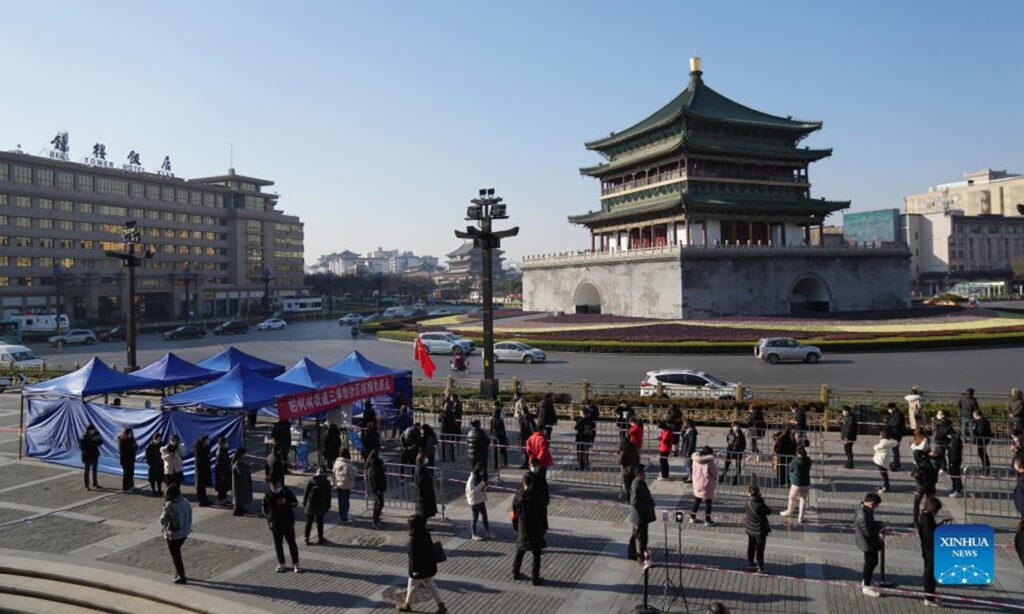Northwest China’s Shaanxi Province, torn by an unmuffled epidemic flare-up, has advocated rural laborers who are working out of the province to stay put during the upcoming New Year and Spring Festival holidays. This comes after the province locked down its capital city of Xi’an earlier this week.
“As out-of-town workers and students return home for the two holidays, there exist potential risks of epidemic spread in rural areas, and our current focus is to prevent such spillovers,” said Zhang Yingan, a vice head of the agricultural department of Shaanxi, at Saturday’s media briefing.
He added that wedding ceremonies in rural areas should be postponed, funerals be held in a simple manner, and banquets be avoided.
Lantern fairs, temple fairs, performances, and religious or other gathering activities will also be limited in rural places, and events involve large crowds will strengthen temperature measurement and disinfection works, he said.
The announcement came after eight rural residents from Xi’an tested positive for COVID-19 on Friday. They have been sent to a designated hospital for treatment, and all close contacts are put under quarantine.
The province saw 157 local confirmed cases on Saturday, 155 of which were found in Xi’an. Since the latest spike hits the province on December 9, a total of 497 locally transmitted cases have been registered in the past half month, and most of them were from the capital city.
The historic city of Xi’an, home to about 13 million people, tightened travel controls and locked down communities on Wednesday after a worrying coronavirus surge sparked concern of wider spread.
So far, the outbreak has spilled over into six places in five provincial regions, including Xianyang and Yan’an in Shaanxi, Zhoukou in Central China’s Henan Province, Dongguan in South China’s Guangdong Province, and Beijing.
Media reported the current resurgence in Xi’an involved multiple unclear infection chains and cases were found in multiple districts, indicating the complex transmission chains that have made the tracking and identification of close contacts more difficult.
Residents queue up for nucleic acid test at a testing site in Xi’an, northwest China’s Shaanxi Province, Dec. 21, 2021.Photo: Xinhua


